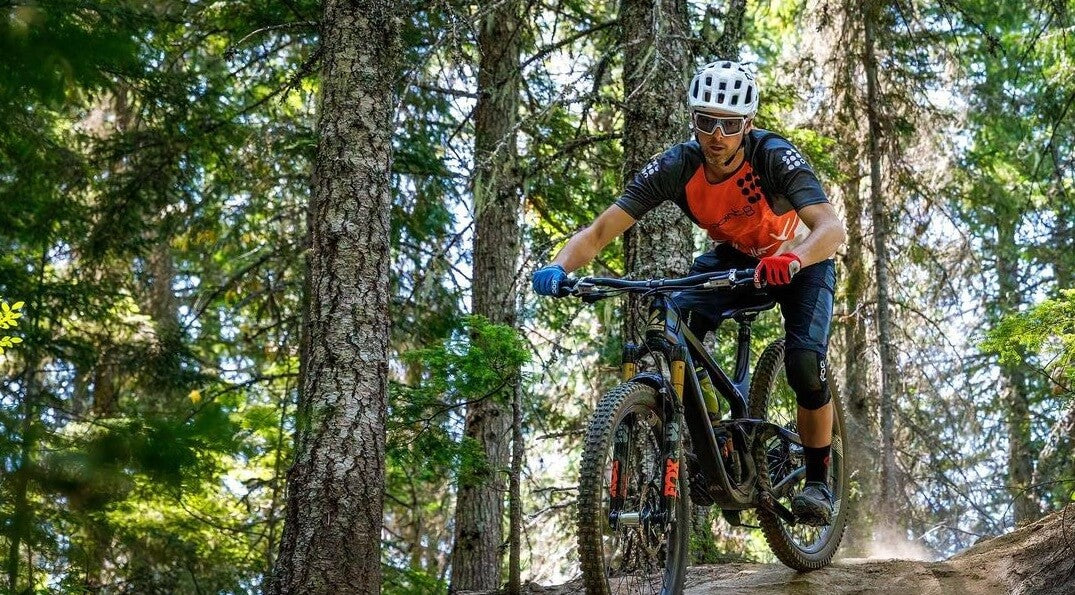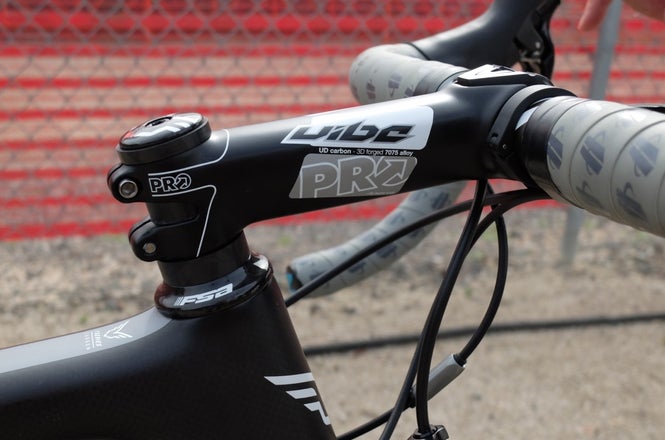Posting this in the "Clydesdales/Tall Riders" forum because my rant is about size XL frames. For perspective, I'm 6'2.5" tall with a +3" ape index -- perhaps slightly taller than average but not tall enough to frequent this forum much.
Anyway there seems to be a current trend in mountain bike frame design that I don't understand and this is the dramatic shortening of head tube lengths. I understand that as A-to-C fork dimensions get longer (and indeed long travel forks are a thing), head tubes (and steerer tubes) must get shorter by equal measure in order to allow the handlebar to remain at equivalent height. But the new Canfield Lithium frame I recently pre-ordered (in size XL) only has a 5" head tube. Same for the size XL Trek Rail I took possession of last week (stoked!) -- a 5" head tube. Slightly less than 5" actually, combined with a zero stack lower cup which only exacerbates the issue.
For comparison I measured the head tube length on my '18 aluminum size XL Guerrilla Gravity Smash frame -- the head tube length on this frame is 6.75" (and I wish even this was longer by up to an inch!) On the Smash frame I'm running an uncut steerer with 1.75" of stem spacers (under a 35mm rise bar). Bottom line after doing the math: if I'm running a frame with a mere 5" length head tube, I'll need 3.5 - 4" of stem spacers if paired with a typical low rise handlebar.
Do you know how gawdawful a 4" stack of stem spacers looks?
I do.
I'm not some sort of Goliath and I don't run my bars exceptionally high -- they're just about level with my seat if not perhaps a half inch lower than the seat. I ride all mountain, not XC (where bars are generally run a bit lower) but the frames I'm talking about here are designed for AM, not XC. I just don't get frame designers' reasoning for minuscule head tubes on XL frames these days.
I initially set my new Trek Rail up as described (uncut steerer, low rise handlebar with about 3.5"+ of stem spacers under the stem) and it looked utterly ridiculous. Such a stack of stem spacers looks nearly as long as the teeny weenie head tube -- a hideous sight. Fortunately I had an old 60mm rise Spank Spike handlebar in my parts bin which I put on the Rail and this places my handlebar at the proper height but even so still requires 20mm+ of stem spacers between upper cup and stem.
It's tolerable. I'm not a slave to fashion but I do have my limits. A proper length head tube would dispense with both the high-rise bars &/or inappropriate stem spacer stack nonsense.
So... why? Why the teensy weensy head tube lengths of late? Thanks for any insights.
=sParty
Anyway there seems to be a current trend in mountain bike frame design that I don't understand and this is the dramatic shortening of head tube lengths. I understand that as A-to-C fork dimensions get longer (and indeed long travel forks are a thing), head tubes (and steerer tubes) must get shorter by equal measure in order to allow the handlebar to remain at equivalent height. But the new Canfield Lithium frame I recently pre-ordered (in size XL) only has a 5" head tube. Same for the size XL Trek Rail I took possession of last week (stoked!) -- a 5" head tube. Slightly less than 5" actually, combined with a zero stack lower cup which only exacerbates the issue.
For comparison I measured the head tube length on my '18 aluminum size XL Guerrilla Gravity Smash frame -- the head tube length on this frame is 6.75" (and I wish even this was longer by up to an inch!) On the Smash frame I'm running an uncut steerer with 1.75" of stem spacers (under a 35mm rise bar). Bottom line after doing the math: if I'm running a frame with a mere 5" length head tube, I'll need 3.5 - 4" of stem spacers if paired with a typical low rise handlebar.
Do you know how gawdawful a 4" stack of stem spacers looks?
I do.
I'm not some sort of Goliath and I don't run my bars exceptionally high -- they're just about level with my seat if not perhaps a half inch lower than the seat. I ride all mountain, not XC (where bars are generally run a bit lower) but the frames I'm talking about here are designed for AM, not XC. I just don't get frame designers' reasoning for minuscule head tubes on XL frames these days.
I initially set my new Trek Rail up as described (uncut steerer, low rise handlebar with about 3.5"+ of stem spacers under the stem) and it looked utterly ridiculous. Such a stack of stem spacers looks nearly as long as the teeny weenie head tube -- a hideous sight. Fortunately I had an old 60mm rise Spank Spike handlebar in my parts bin which I put on the Rail and this places my handlebar at the proper height but even so still requires 20mm+ of stem spacers between upper cup and stem.
It's tolerable. I'm not a slave to fashion but I do have my limits. A proper length head tube would dispense with both the high-rise bars &/or inappropriate stem spacer stack nonsense.
So... why? Why the teensy weensy head tube lengths of late? Thanks for any insights.
=sParty










